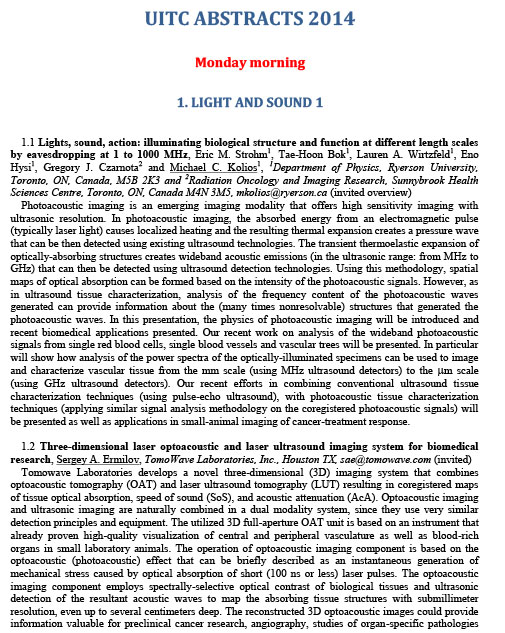 Date: June 10, 2014
Date: June 10, 2014
 Publication Type: Technical Publication
Publication Type: Technical Publication
 Technology: ONE
Technology: ONE
 Publication Location: UITC Symposium
Publication Location: UITC Symposium
Background: Ultrasound guidance for needle-based interventions is a widespread approach to assist in precise targeting of anatomical structures for diagnostic (e.g., for biopsies) or therapeutic (e.g., tumor ablation or anesthesia) purposes. However, limited imaging quality (due to attenuation or suboptimal structure/instrument echogenicity), required hand/eye coordination for probe and instrument placement and anatomical constraints make instrument localization and targeting difficult. Therefore, systems based on mechanical, optical or electromagnetic tracking aim to provide guidance for the operator. However, these systems are cumbersome, expensive, difficult to learn and use and time-consuming to set up and therefore have not achieved widespread physician acceptance or use.
Objectives: Intervention-agnostic, unobtrusive guidance that works immediately after startup, at any time during the intervention, without additional setup steps, for any needle without required markers, and without the need for special environments (including aspects such as reference bases, EM compatibility etc.) can significantly improve adoption of ultrasound guidance. The use of ultrasound guidance for
needle procedures is the gold standard of care and is associated with high-quality medicine and superior clinical outcomes.
Methods: Using probe-mounted miniature stereo cameras, the described novel local instrument tracking approach (Clear Guide ONE™, Clear Guide Medical, Baltimore, MD) provides probe-relative localization of needle-like instruments. Real-time observation, detection and 3D reconstruction of instruments allow the overlay of predicted needle trajectories on ultrasound video streams. In order to ensure a uniform, clear target, a 2.4 mm steel ball (BB) was suspended by a crosswire and embedded in a Sigma-Aldrich gelatin from porcine skin at a depth of 6 cm. The BB target is highly visible in ultrasound, thus removing any ambiguity of the target location. For comparison, biopsy lesions in liver and kidney discovered by CT are usually 5–10 cm deep and have a minimum diameter of 5 mm. Imaging was performed using linear (L14-5/38) and convex (L5-2/60) handheld ultrasound probes on an Ultrasonix SonixTablet (Ultrasonix Inc., Richmond, BC, Canada). The augmented US plus guidance video streams were shown to two physicians (Fellows in Interventional Radiology at Johns Hopkins University). The subjects were not familiar with the device beforehand, and performed 41 guided-needle insertions in total. They were instructed to align the needles with the target bb before insertion and then minimize directional adjustments during placement. This is unlike with conventional “blind insertion”, where the needle is reoriented under ultrasound visualization to reach the target and consequently causes tissue trauma and needle bending. After each trial, two orthogonal digital photographs were taken of the BB and the placed needle as they appeared in the transparent phantom. These images were then manually analyzed to triangulate the distance of the needle to the target.
Results: Needle placement was successfully completed in all cases, with minimal training required (approximately 15min “free trialing” to become familiar with both the ultrasound machine and the Clear Guide ONE). Overall target accuracy was 3.27/2.85 mm average/median (range 0.3–10.5 mm; 2.28 mm standard deviation). As expected, accuracy for the lower-frequency convex probe was lower (3.8/4.21 mm avg./med.; range 0.3–7.3 mm; 2.17 mm std. dev.; N = 15) than for the high-frequency linear probe (2.96/2.11 mm avg./med.; range 0.7–10.5 mm; 2.33 mm std. dev.; N = 26).
Conclusion: The described fully-handheld local tracking system allows precise and repeatable interventional needle placement with minimal training and hardware footprint. We would expect greater adoption of ultrasound guidance by all physicians inserting needles or interventional tools into the body and therefore better clinical outcomes.

